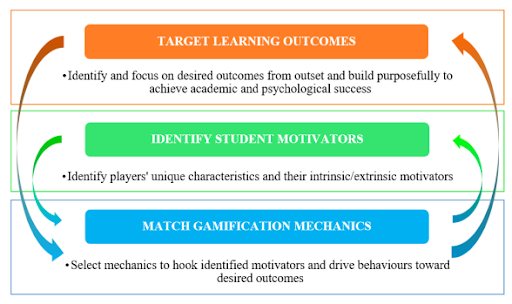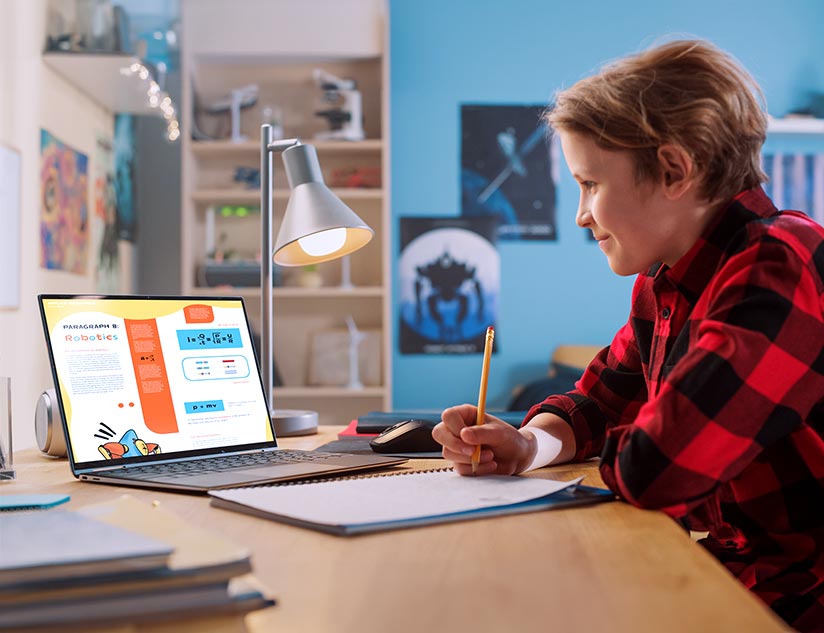Unlocking Learner Achievement with Gamification
February 21st, 2024
Gamification in education is forecasted to reach $71.7 billion, growing at a CAGR of 15.8% between 2024 and 2032. The demand is being propelled by the efficacy of game-based learning in bolstering learner engagement, driving motivation, and enhancing learning achievement while offering personalized and adaptive experiences.
Essence of Gamification
As Barry Kirk, CX Practice Leader at Chapman and Co., says, gamification is more than adding games to users’ existing experiences. It is about using game-based elements to make learning “more compelling and attention-worthy.”
Kirk’s view highlights how the outcomes of gamification are determined by the way game elements are conceptualized in the context of education – whether game mechanics are simply added to pre-existing courses or as a pedagogical approach that foundationally integrates game theory within course development. Gamification should add a new engagement layer to elevate the experience and focus on eliciting the desired behavioral changes.
However, not all games are created equal. Every gaming tool has specific benefits and impacts on learner behavior. It is, therefore, essential for instructional designers to understand their learner demographics and tailor gamified learning design to the audience’s needs. Centering game-based learning only on rewards can be counterproductive since it might give rise to unhealthy competition. Generic gamified learning design may detract from DEI initiatives by creating rigid learning paths that do not align with individual learning goals and needs. It also lacks inspiration and meaningful interaction. Therefore, instructional designers must refine gamification strategies to deliver personalized, learner-centric experiences that elevate learning achievement.
Matching Mechanics to the Mission: Aligning Gamification with Learning Goals
Bringing game design in line with learning goals can be challenging for instructional designers. This requires a deep understanding of each game-based tool and its effects on learner engagement, motivation, and ability to drive learners closer to the desired outcomes. The SMART objectives technique can prove helpful if you want to enhance retention, course completion rates, or learning achievement for a specific module.
After defining the objectives, you must identify the gamification elements that meet your goals. For instance, leaderboards and badges instill a sense of achievement at every step while fostering competition. However, these should be awarded considering individual capacity and targeted learning achievement. Using sound design and mnemonic rhymes boosts memorization. Quizzes, such as crosswords and puzzles, reinforce recall. Interactive storytelling enhances individual participation and helps learners relate to learning better. Experimental simulations enhance concept application, skill building, and problem-solving. Game-based quests can offer multiple benefits, including encouraging critical thinking, decision-making, and consequence analysis.
Understanding Your Gamers: Learner-Centric Gamification Strategies
Delivering DEI-based education requires adopting gamification mechanics that facilitate cultural appropriation, age appropriation, and need appropriation throughout the learning journey. It includes instruction, discussions, assessments, and feedback. Student-centric, motivation-based gamified learning design can significantly contribute to learner success and deliver positive learning experiences. Gamification pedagogy employs gamified mechanics that motivate and engage learners, driving them to achieve greater academic success. This helps design culture-sensitive, adaptive, and inclusive educational experiences.
Student-centric learning design starts with understanding the learner demographics: preferences, knowledge, skill levels, cultural and linguistic needs, and academic goals. Next, different gamification tools are assessed and matched to the needs of the target learner base. Finally, smart content authoring tools recommend that learning materials be designed to best meet the target audience’s needs. AI-powered smart LMSs dynamically align game mechanics to individual needs and generate hyper-personalized learning paths.
A 2-year-long study by MacEwan University of Canada has proven that this approach helps bridge the gaps between curriculum and students’ learning needs. Grouping gamification mechanics with learning outcomes and individual requirements helps lower performance-related anxiety and language barriers. Student-centrism helps maintain academic rigor and enhance learning achievement. Do you know about any similar success stories? Share them with us.
Ready to Gamify?
Gamification provides a way to make learning enjoyable and exciting. The innovative learning strategy stimulates curiosity, provides a sense of achievement, and uses rewards to encourage and motivate learners. In the digital age, merely making things more interesting is not enough; personalizing experiences and meeting the users where they are ensure continued engagement and a lasting impact.
Source: https://ro.uow.edu.au/cgi/viewcontent.cgi?article=2689&context=jutlp
Therefore, course creators must:
- Understand gaming mechanics
- Grasp the achievement level of Bloom’s taxonomy in the cognitive, affective, and psychomotor domains.
- Identify the desired learning outcomes of the course.
- Assess the needs of the target learners.
- Leverage cutting-edge tools to facilitate effective gamification of learning materials.
Additionally, it is paramount to consistently evaluate and refine the game-based approach to ensure that pedagogy addresses the changing demands of learner groups and learning outcomes. Learn more about disruptive course authoring tools backed by AI-powered analytics to provide insightful recommendations to enable intelligent and inclusive instructional design.









